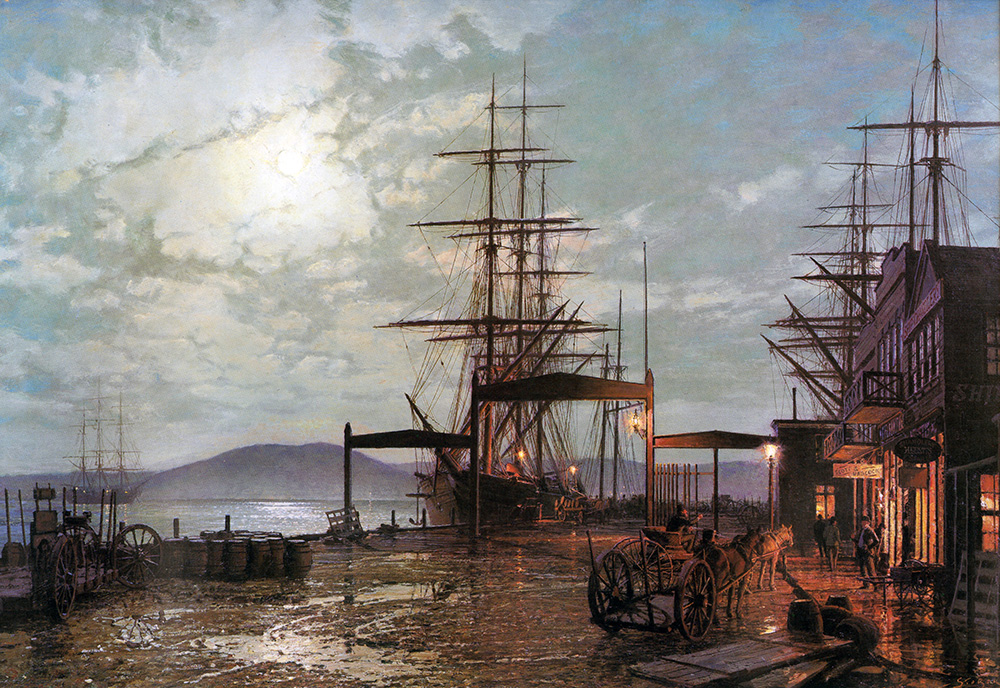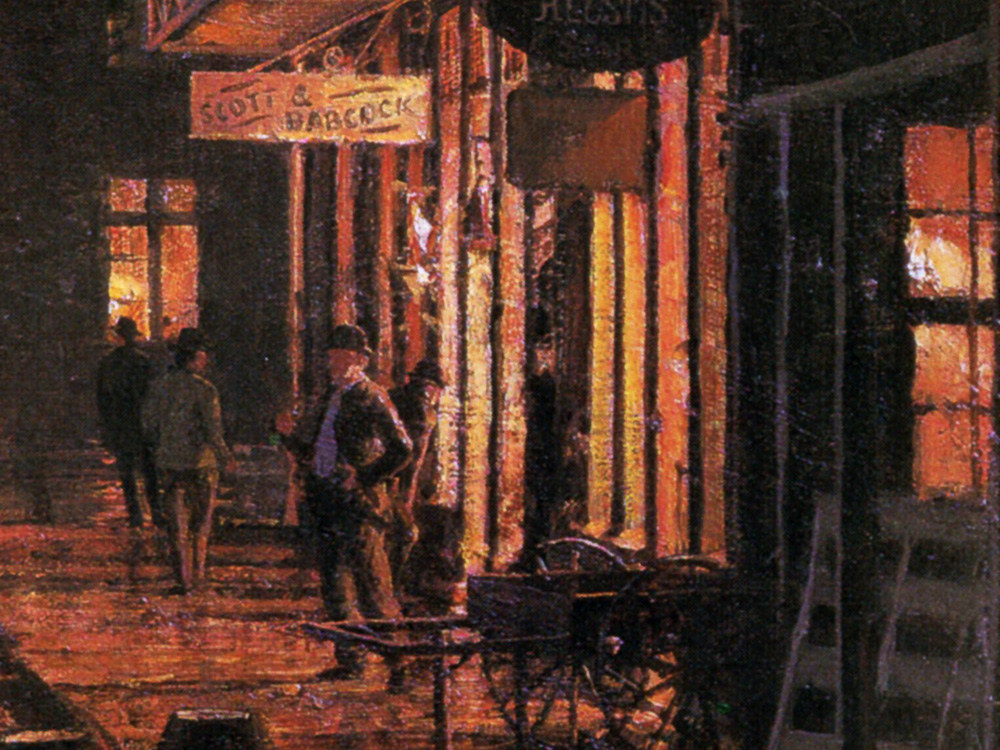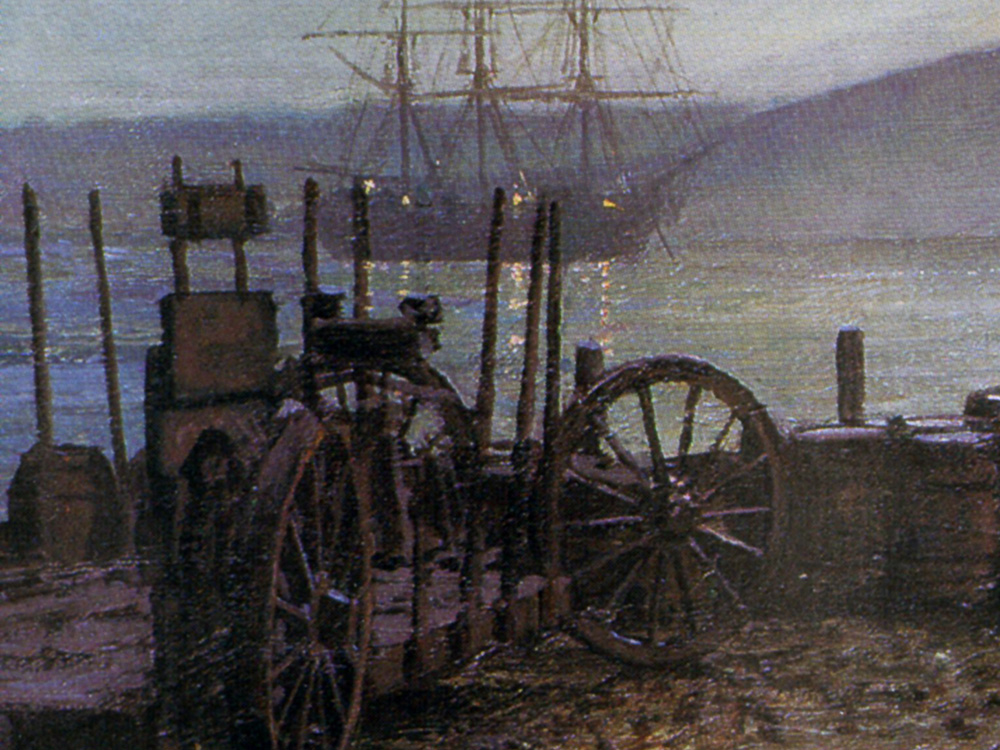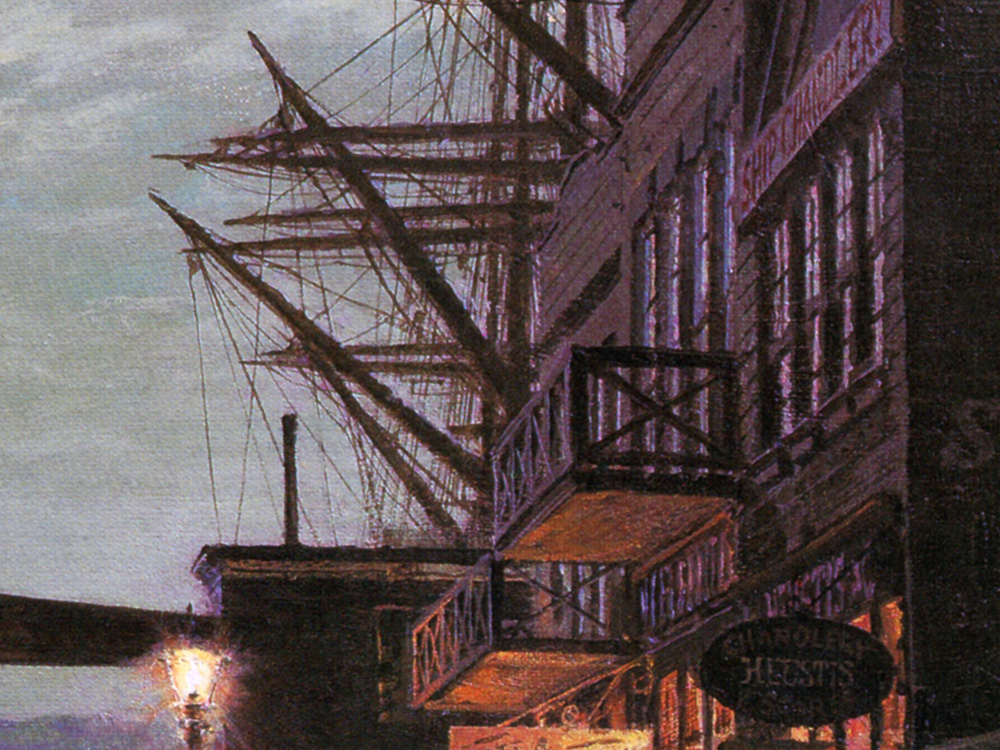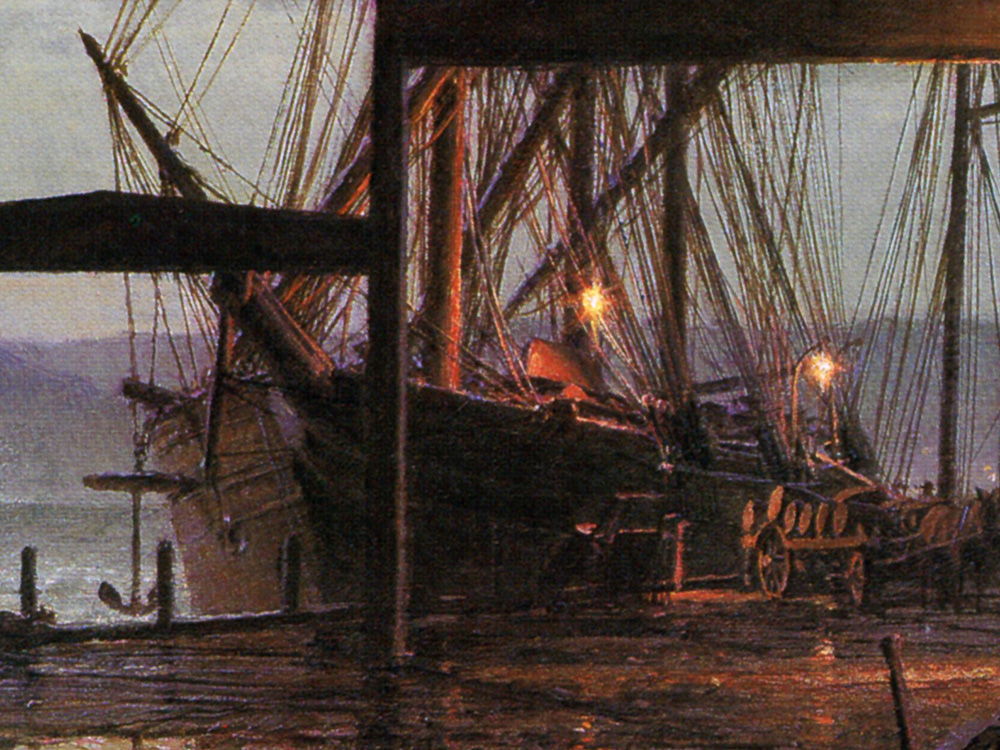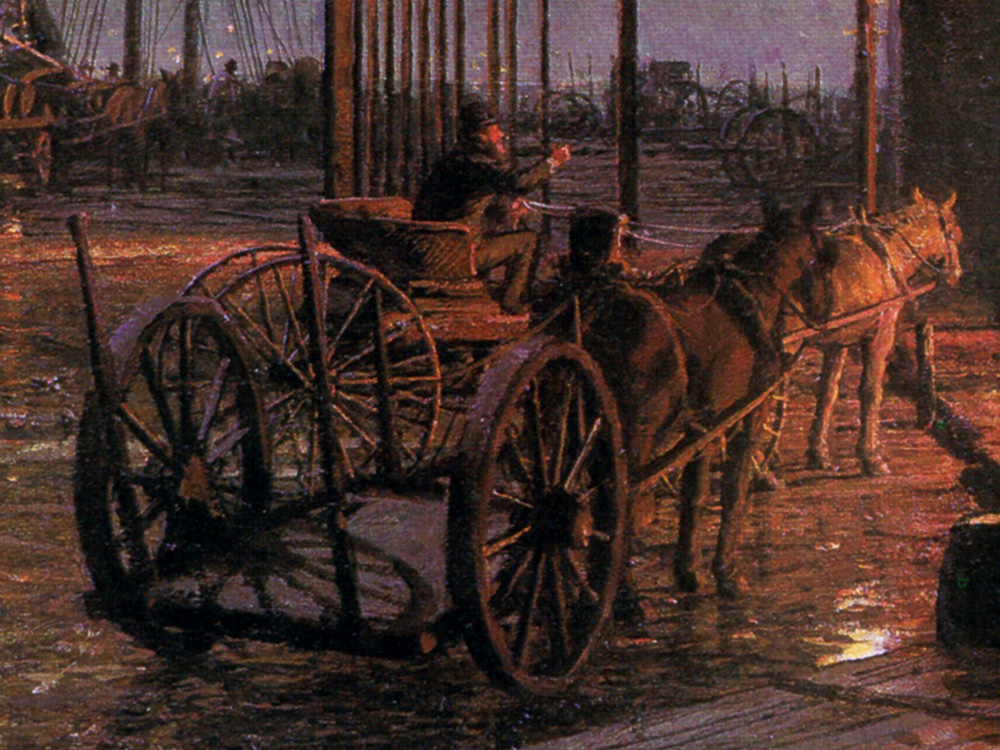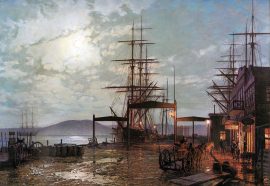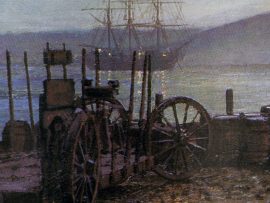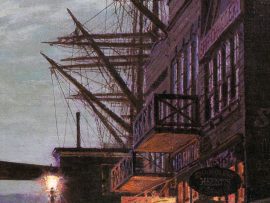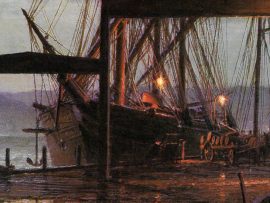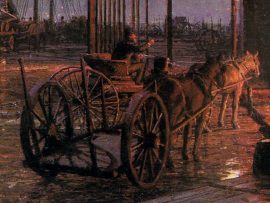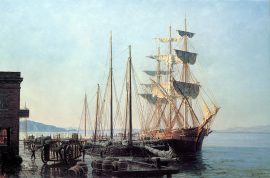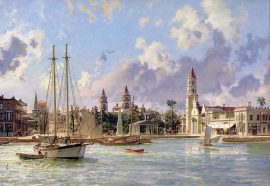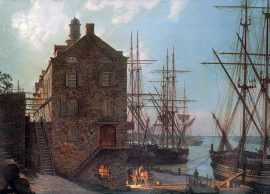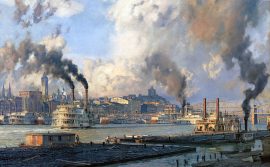San Francisco: Vallejo Street Wharf in 1863
$2,100.00
In 1835 the settlement at Yerba Buena Cove, later to be renamed San Francisco, consisted of a single tent pitched by an Englishman. Three years later, there were two houses, including the Englishman’s. It hardly seemed a likely beginning for what would become only a short time later the principal landing on the San Francisco Peninsula. Yerba Buena Cove was a very shallow, with mud flats stretching out into the bay at low tide.
There was a modest bit of growth both along the waterfront and around the village in the early and mid-1840s. But when the cries of “Gold, gold, gold!” reverberated across the continent in 1848 galvanizing thousands of prospectors into action, the inhabitants of San Francisco quickly began filling in their cove so that wharves and buildings could be established in the deeper water. Private investors initially provided the funds for the waterfront reclamation, which was taken over by the State Harbor Commission in 1863. Later a stone seawall was constructed along the waterfront and fill from the hills surrounding the city was used to shore up the tidal land behind the seawall.
This painting was inspired by an unusually detailed 1863 daguerreotype of the Vallejo Street Wharf area. I tried to show in the picture how the San Francisco waterfront was pushed out on man-made land as pilings were driven into the bottom and filled with earth. In the foreground of the painting one can see that the ground is still muddy. Thus, the waterfront was extended ten blocks beyond its original location on Montgomery Street. By 1863, new streets had been constructed in this manner and stretched well out into the bay.
This nighttime scene of the Vallejo Street Wharf is deceptively quiet: echoes of the wharf’s frenetic daytime activities are briefly brought to mind by snatches of conversation and the staccato bursts of laughter that pour out of the saloon into the street. But in the morning the clatter of hooves and wooden wheels, the cries of crewmen and men of commerce will again fill the street.
| Weight | 6.00 lbs |
|---|---|
| Catalog: | Stobart-146 |
| Artist: | John Stobart |
| Dimensions: | 20 1/2" x 31 1/2" |
| Edition: | 750 |

